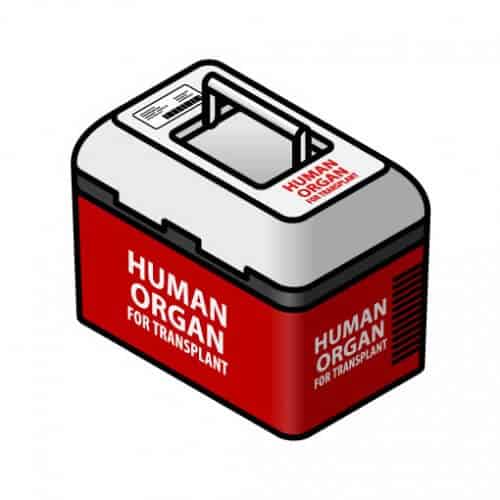Donated organs can be kept supercooled for days, instead of hours

About 6,400 liver transplants were performed in the United States in 2013, but demand far outstrips supply: more than 15,000 patients are waiting on the waiting list. Apart from the lack of availability, in liver transplants there is a very narrow window of opportunity between the donation and the transplant. The organs only stay fresh for 12 hours when they are kept in a cold preservation solution on ice. Freezing is not possible because it creates ice crystals that injure the cells of the organ during thawing.
Today, organs for transplantation are kept in an active state for only a few hours. Researchers at Harvard Medical School are abandoning the usual storage method in favor of a method that can extend the duration of preservation of livers and other organs. In an article published in the journal Nature Medicine, they report on rat livers that were kept for three full days in a condition suitable for transplantation.
To preserve the organs for such a long period, the team used a machine that created a zone of chemical buffer around the organ cells. The buffer protected the cell membranes from the ice knives. After that, the team slowly cooled the livers down to minus 6 degrees Celsius without actually freezing them, a process called supercooling.
In the experiment, the livers that were hypothermic for three days were transplanted into six rats and all of them survived after the operation for three months until the end of the experiment. In contrast, as expected, rats that received livers kept for three days on ice all died. The supercooling method cannot operate for an unlimited time: only about 60% of the rats that received a liver preserved for four days managed to survive until the end of the experiment. Now the team plans to try the method in pigs and humans.
Success with this approach, say the authors, could increase the availability of implants for patients. The map of liver distribution in the US is far from equal. For example, patients who live near dangerous places, such as highways prone to traffic accidents, have higher chances of having a normal liver.
According to Korkut Ugen, a professor of surgery at Harvard Medical School who participated in the experiment, in the future supercooling could also support the research of "organs on chips". These are collections of human cells grown in a laboratory and designed to mimic the organ in the body. The researchers have high expectations for this method and hope to learn with its help how the organs work and how they react to different drugs. Supercooling will make their transport from manufacturing labs to researchers more practical. But right now, the laws are focused on expanding the availability of organs for transplant in patients. The waiting list for all organs in the US jumped to more than 122,000 patients.

2 תגובות
Life
All the things you describe are the subject of many studies that take place all the time.
A few years ago a particularly interesting experiment was conducted. They took a human cell and through engineering manipulations (I don't remember which) grew a human ear on the body of a mouse. The result, as seen in the photo, was extremely strange. Maybe here lies the future solution. Appropriate organ growth of the patient. There will be no organ rejection. You should also check the regeneration process of lizards (I don't remember the name). After cutting off their tail, the lizards grow a new tail. As far as I know human liver is also capable of regrowth. With a somewhat futuristic view, it is appropriate to check these phenomena. Many problems will be solved. To illustrate, following an accident or war, a person who lost an arm or a leg enters medical rehabilitation where the stump grows back.